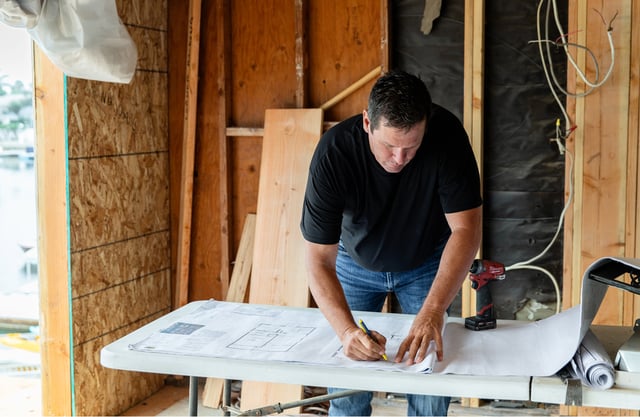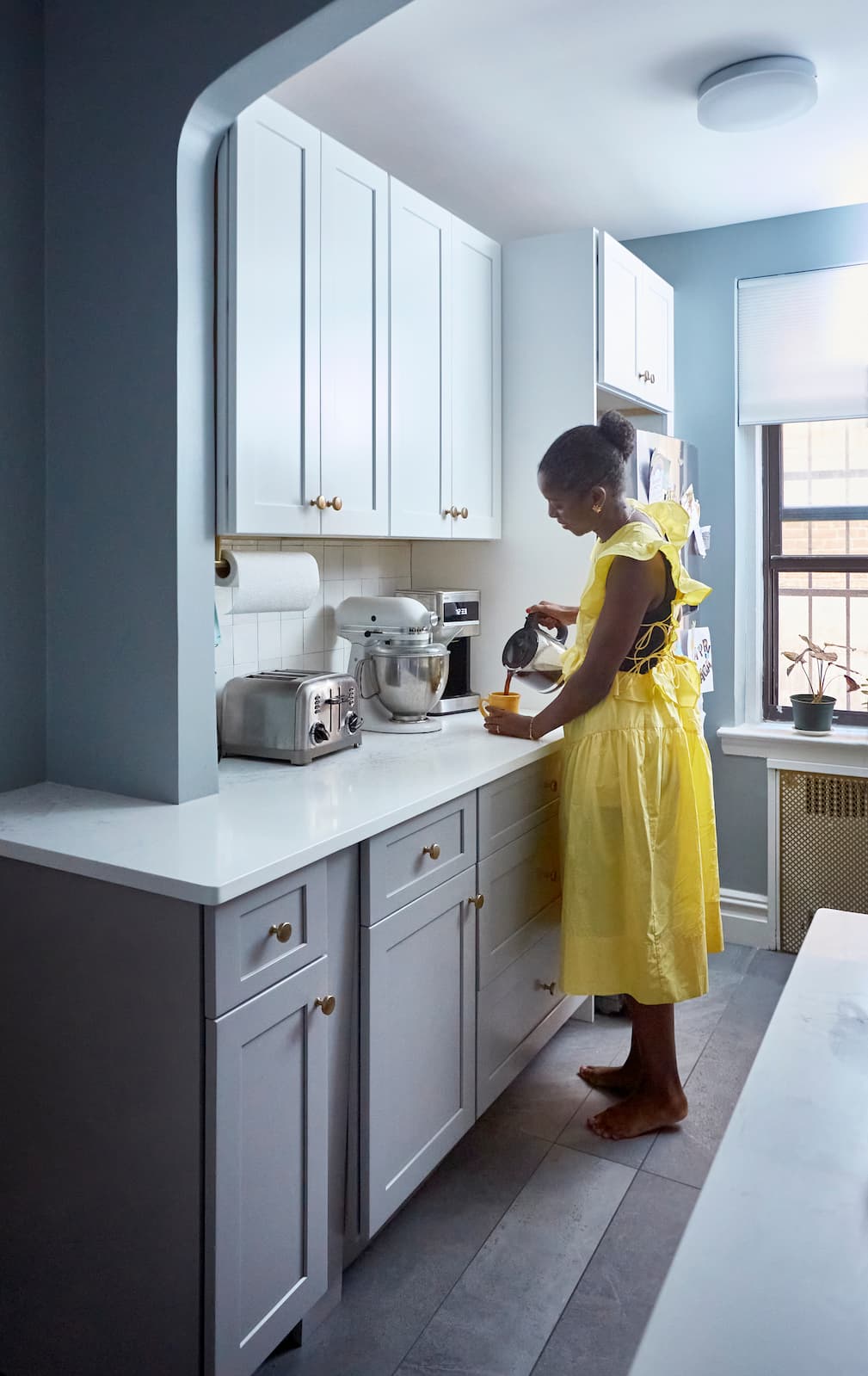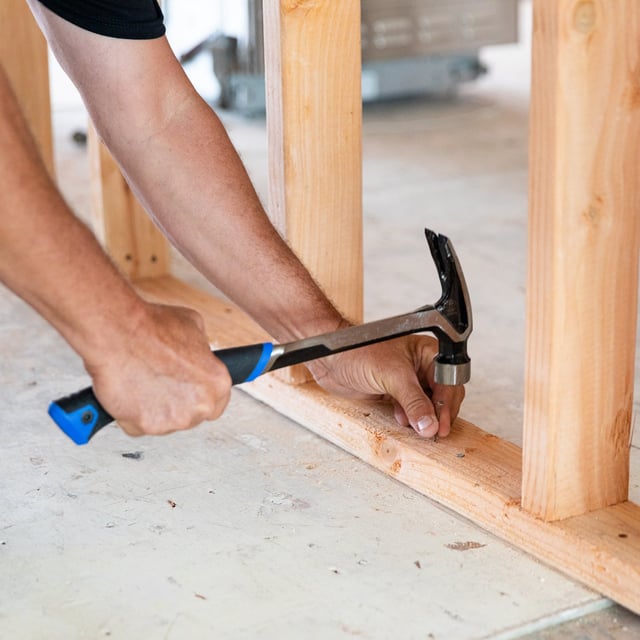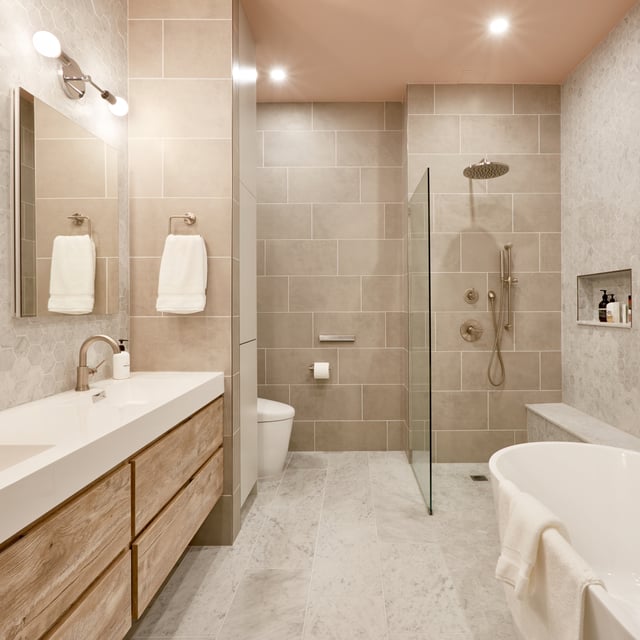
Cost
How Much Does a Bathroom Addition Cost?
09.26.2025


In This Article
Rising interest rates are making waves—and not the fun kind you get from a backyard pool install. As borrowing costs climb, home renovations are getting pricier, forcing homeowners to rethink their budgets and timelines. That dream kitchen or extra bathroom? Still doable, just with a little more strategy.
Design a Home That’s Uniquely Yours
Block can help you achieve your renovation goals and bring your dream remodel to life with price assurance and expert support.
Get Started
The good news is that with smarter planning, savvy financing, and a few cost-control tricks, you can still make magic happen without maxing out your credit. In this guide, we’ll walk you through how to keep your renovation goals on track—even when interest rates are trying to throw a wrench in the plans.
Renovating your home is one of those thrilling life moments—like adopting a puppy or starting a compost bin. It feels exciting, a little chaotic, and deeply satisfying when it works. But, by throwing high interest rates into the mix, that new kitchen island suddenly started to feel more like a luxury yacht purchase. When borrowing money gets more expensive, your renovation budget can balloon in ways that are anything but fun.
The good news? You don’t have to scrap your plans. You just need to understand how rising rates affect your finances so you can plan smarter and dodge the sticker shock. With the right strategy, your home upgrade can still be a win—not a wallet-drainer.
Learn More: How to Pay for Your Home Renovation in 2025?
Let’s say you’re borrowing $50,000 to update your kitchen. When interest rates are low, your monthly payment might be manageable—like a fancy dinner or two each month. But when those rates jump, that same loan suddenly costs hundreds more per month, and you’re not getting a single extra drawer pull for the trouble.
Higher interest rates don’t just mean bigger monthly payments—they also shrink how much you can actually borrow. Lenders become more cautious when the economic outlook is uncertain, which means stricter loan approvals, lower lending limits, and more paperwork than your last mortgage.
So, even if your project hasn’t changed, the cost of financing it almost certainly has. That makes it even more important to fine-tune your budget, cut unnecessary extras, and think through how you’ll fund each phase.
Let’s break down how rising rates mess with the most common renovation financing tools:
Home Equity Lines of Credit (HELOCs)
These are great when rates are low. They let you borrow only what you need and draw funds as your project progresses. But most HELOCs have variable interest rates, which means your payments can creep up month after month. That flexible funding suddenly comes with a side of financial unpredictability.
Home Equity Loans
These come with fixed interest rates, which sounds like a safe harbor in a storm. But here’s the catch: fixed doesn’t mean low. These rates have gone up, too, so your total repayment amount will be higher than it was even a year ago.
Cash-Out Refinancing
This used to be a go-to move: refinance your mortgage at a low rate and pocket the difference for renovations. Now? Not so much. With mortgage rates at multi-year highs, refinancing often means giving up your low original mortgage rate in exchange for one that’s significantly more expensive. It might make sense in certain situations—but it’s no longer the slam dunk it once was.
Personal Loans for Home Improvement
Fast and unsecured personal loans can be helpful if you’re not putting up your home as collateral. But they also tend to have the highest interest rates, especially now. So unless your credit score is sparkling and the loan term is short, this can be a pricey option.
Still, don’t lose hope. With a bit of planning, a tight budget, and maybe a few DIY YouTube tutorials, you can still get the renovation you want—even in a high-interest world. Just maybe hold off on the marble-clad steam room. For now.
Renovate now, pay later
Achieve the space you're looking for today, while financing it over time with our trusted partner.*
*Not available in NYC
Learn More
Just because interest rates are high doesn’t mean your home has to stay stuck in the 1980s (unless you’re going for that aesthetic—no judgment). With a few smart moves, you can still get the renovation you want and keep your finances intact. It's all about being strategic, staying realistic, and maybe pausing on the gold-plated fixtures. Here’s how to stretch your budget and stay sane when borrowing costs are less than ideal.
Start by separating your must-haves from your nice-to-haves. A leaky roof? Must-have. Heated towel racks in the guest bathroom? Probably a “someday” feature. When interest rates are high, it pays—literally—to focus on the projects that protect your home’s value or boost resale ROI.
Think in terms of function and future payoff. Kitchen and bathroom updates tend to give solid returns, while a meditation room with imported wood flooring might not exactly scream value to potential buyers (unless they’re really zen). Refining your scope helps you stay focused and keep costs from spiraling.
We get it—budgeting isn’t the fun part. But building a rock-solid, honest-to-goodness budget will save you from the shock of surprise costs down the line. That means including both hard costs (labor, materials, the actual bricks, and boards) and soft costs like permits, architectural plans, design fees, and inspection costs.
Don’t forget to account for those inevitable curveballs—like a tile shipment stuck in customs or your contractor discovering knob-and-tube wiring behind the walls. High interest rates mean borrowing extra last minute can be painful, so you’ll want to get the numbers right up front. Bonus points if you can leave a little room for one or two small splurges (we see you, wine fridge).
A 10–15% contingency might do the trick in normal times. But when interest rates are making their best mountain-climbing impression, you’ll want to beef that up to 20–30%. Why? Because borrowing money mid-project is a lot pricier than it used to be, unexpected costs always pop up, usually at the worst time.
A bigger buffer helps protect against rising material prices, labor shortages, and loan rate changes that could increase your monthly payments if you need to borrow more. Think of it as financial bubble wrap: a little extra padding to absorb the bumps.
In the end, renovating during high interest rate periods is totally doable—you just need a good plan, a better budget, and maybe fewer velvet wall panels. Stay focused, flexible, and ready to pivot, and your dream space can still come to life without turning your wallet into a horror story.
Transparent Pricing You Can Trust

When interest rates are climbing faster than your demo-day adrenaline, financing a home renovation can feel like a financial tightrope act. But don’t panic—there are still smart, strategic ways to fund your dream project without selling a kidney or swiping your credit card into oblivion. With a little creativity, patience, and planning, you can still get that new kitchen or bathroom upgrade and stay (mostly) stress-free. Here’s how to make it work when money’s not quite as cheap as it used to be.
When borrowing gets expensive, the cheapest money is still the kind you already have. If you can stash away savings ahead of your renovation, even covering just part of the costs in cash can make a big difference. Paying upfront where possible means no monthly interest payments—just the satisfaction of watching your contractor install a backsplash without also installing debt.
Also, check out what local programs might be available. Some cities and states offer grants, rebates, or low-interest financing for things like energy-efficient upgrades or historic home preservation. These hidden gems can seriously offset your costs and don’t require you to jump through too many flaming hoops.
Contractors aren’t the IRS—many are surprisingly open to working with you on payment schedules. Ask about setting up staged payments based on project milestones. Not only does this protect you from paying too much upfront, but it also keeps everyone motivated to stay on track (hello, progress!).
Some contractors even offer small discounts for early payments or cash payments—just be sure to get everything in writing. You’re running a renovation, not a handshake-based trust experiment.
Learn More: How to Negotiate with a Contractor before your Home Remodel
We know it’s tempting to just swipe the ol’ plastic and deal with it later, but tread carefully. Credit cards often come with interest rates north of 20%, which can turn that $1,200 tub into a $2,000 regret before you know it.
Personal loans might be a better option if you need to borrow a small-to-medium amount—but only if you qualify for a decent rate. Shop around, compare terms, and be honest with yourself: does this get the project done without making you sweat every time the bill arrives?
Bottom line? Financing a renovation during high-interest times isn’t impossible—it just requires more forethought and fewer impulsive splurges on Italian marble. Get creative, get strategic, and you’ll find a way to bring your dream space to life without sacrificing your financial sanity.
Renovating your home on a budget can feel like trying to host a dinner party with one pot and a bag of rice—but with the right hacks, it can be done. Saving money doesn’t mean cutting corners or sacrificing style. It means being strategic, knowing where to splurge, and—yes—being willing to paint a wall or two yourself. Here’s how to keep your renovation from becoming a runaway expense train.
Materials can eat up a huge chunk of your budget, but they don’t have to. Be the savvy shopper your budget needs—wait for sales, browse overstock websites, and don’t overlook the power of reclaimed or discounted materials. That gorgeous farmhouse door or marble slab might be hiding at a salvage yard or warehouse sale just waiting to be discovered (and bragged about).
Also, timing matters. Buying materials early can help you lock in prices before inflation or supply chain hiccups strike again. Plus, no one wants to be the person whose renovation is delayed because the tile didn’t arrive on time. You’ve waited long enough—order early.
You don’t need to become a general contractor overnight, but there are plenty of renovation tasks that don’t require a degree in engineering. Demolition, painting, assembling flat-pack furniture, or removing old fixtures can often be done without professional help (and without a full-blown meltdown).
That said, know your limits. If you’ve never touched electrical wiring or plumbing, this is not the time to learn. Some jobs are better left to the pros—especially the ones that could result in a flood, fire, or frantic call to your insurance company. Pick your DIY moments wisely and you’ll save money without adding stress.
If your dream renovation is bigger than your current budget, don’t ditch the dream—just break it up. Focus on high-priority areas first, like the kitchen, bathroom, or anything that’s leaking, cracking, or actively falling apart. These upgrades will make your space more livable (and more valuable) right away.
Cosmetic touches, like new light fixtures or that hand-painted tile backsplash you saw on Pinterest? Those can wait. Create a phased plan that lets you tackle the essentials now and the extras later, when your finances and patience have had a chance to recover.
At the end of the day, renovating on a budget is totally doable with a little creativity and a lot of flexibility. Think of it as a marathon, not a sprint, with fewer blisters and more mood boards.
Renovate with confidence every step of the way
Step 1: Personalize Your Renovation Plan
Step 2: Receive Quotes from Trusted Contractors
Step 3: Let Us Handle the Project Details

In a high-interest rate world, disciplined budgeting isn’t just smart—it’s survival. Every dollar has to work harder, so knowing where to spend (and where to chill) is key. By setting a realistic budget, building a bigger cushion, and exploring alternative financing, you can still create the space you want—without the debt hangover.
Stay flexible as you go. Renovations have a way of throwing curveballs, and the best results come when you focus on improvements that add real value—not just instant gratification. That built-in espresso bar? Maybe someday. Fixing that drafty window? Do it now.
Ready to make your renovation dream a reality (without losing your sanity or your shirt)? Learn more about how Block can help you budget smarter, plan better, and actually enjoy the process.

Written by Block Renovation
Is it better to delay a renovation until interest rates go down?
How can I finance a home renovation without taking on too much debt?
What types of renovations offer the best return on investment during high-interest periods?
Are there special loan programs for home renovations when rates are high?
How much should I increase my contingency budget when borrowing costs are rising?

Renovate confidently with Block
Easily compare quotes from top quality contractors, and get peace of mind with warranty & price protections.
Thousands of homeowners have renovated with Block

4.5 Stars (100+)

4.7 Stars (100+)

4.5 Stars (75+)

Cost
How Much Does a Bathroom Addition Cost?
09.26.2025

Cost
Calculating the Cost of Your 12x24 Addition
09.18.2025

Cost
10x10 Bathroom Remodeling Costs
09.18.2025

Cost
The Average Cost of a Jacuzzi Bath Remodel—and How to Save
09.18.2025

Finance
With Lower Interest Rates, Is Now a Good Time to Renovate?
09.18.2025
Renovate confidently